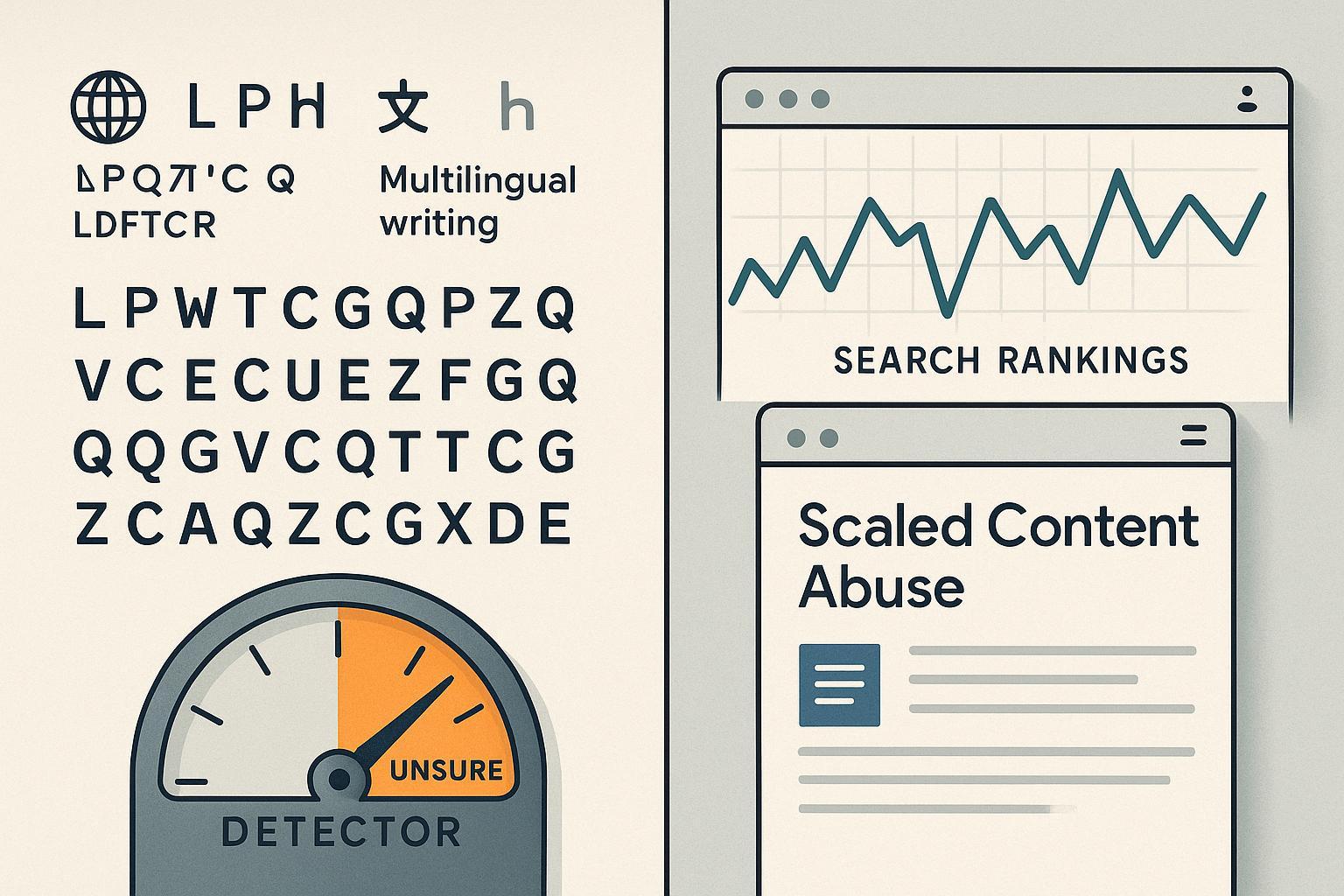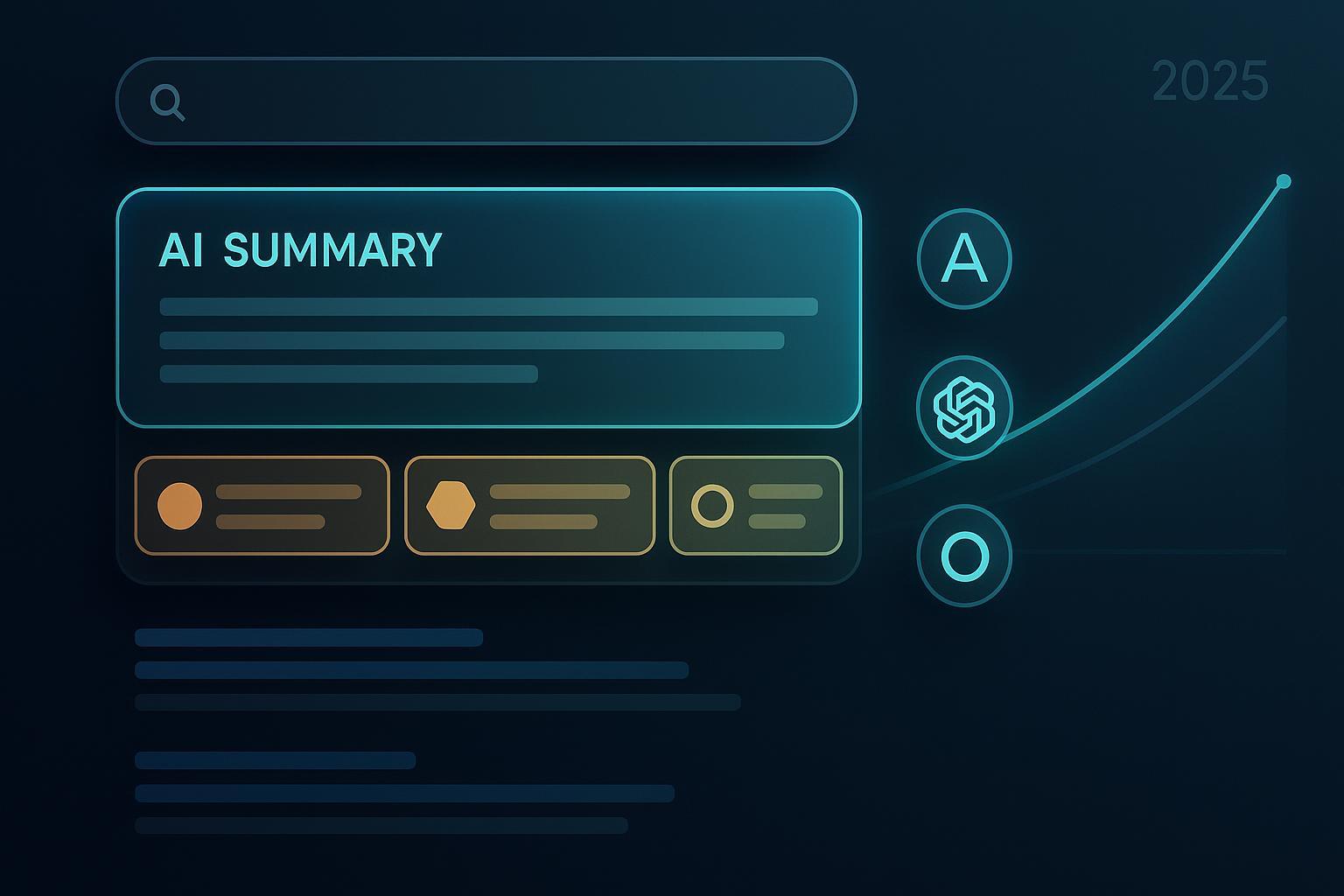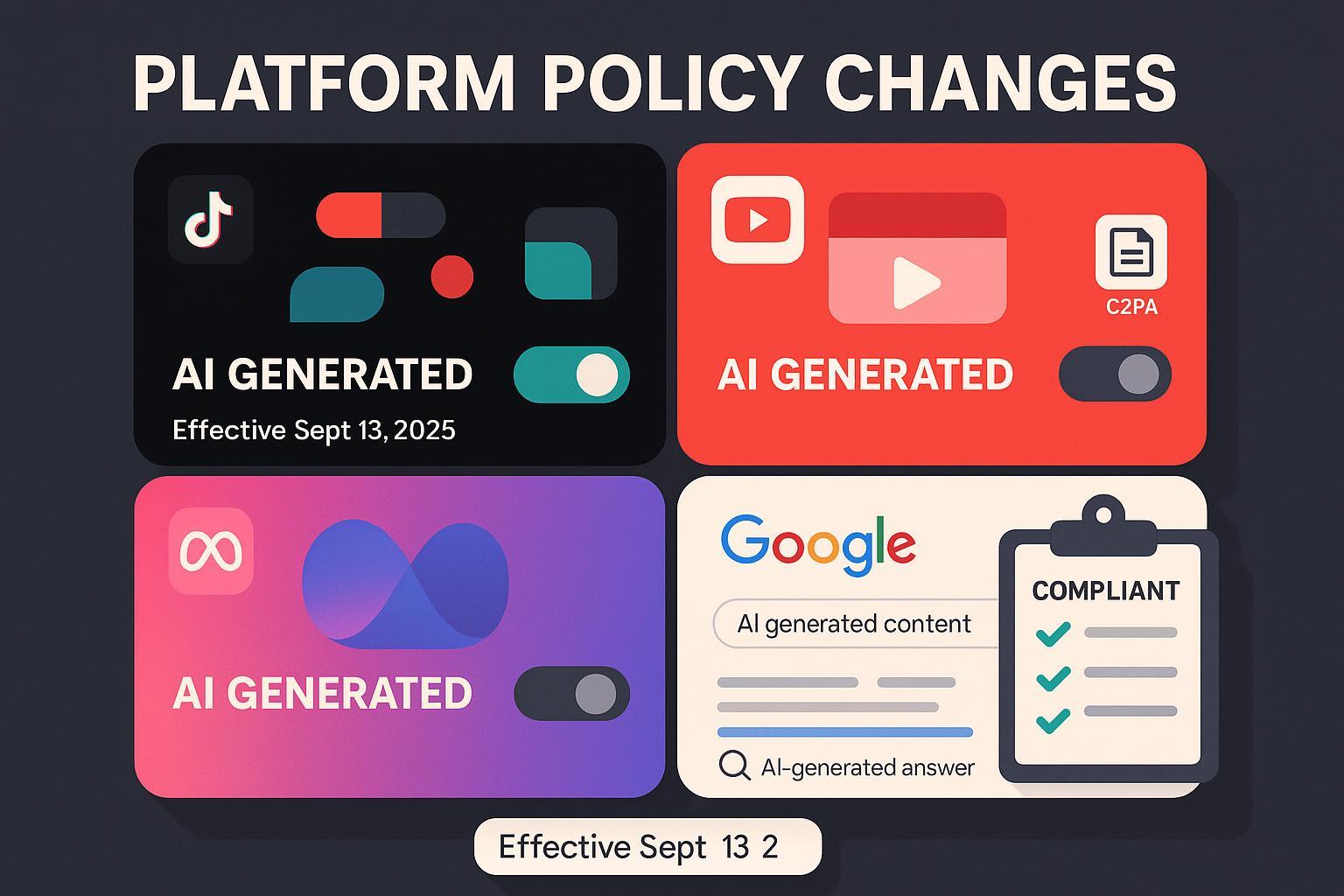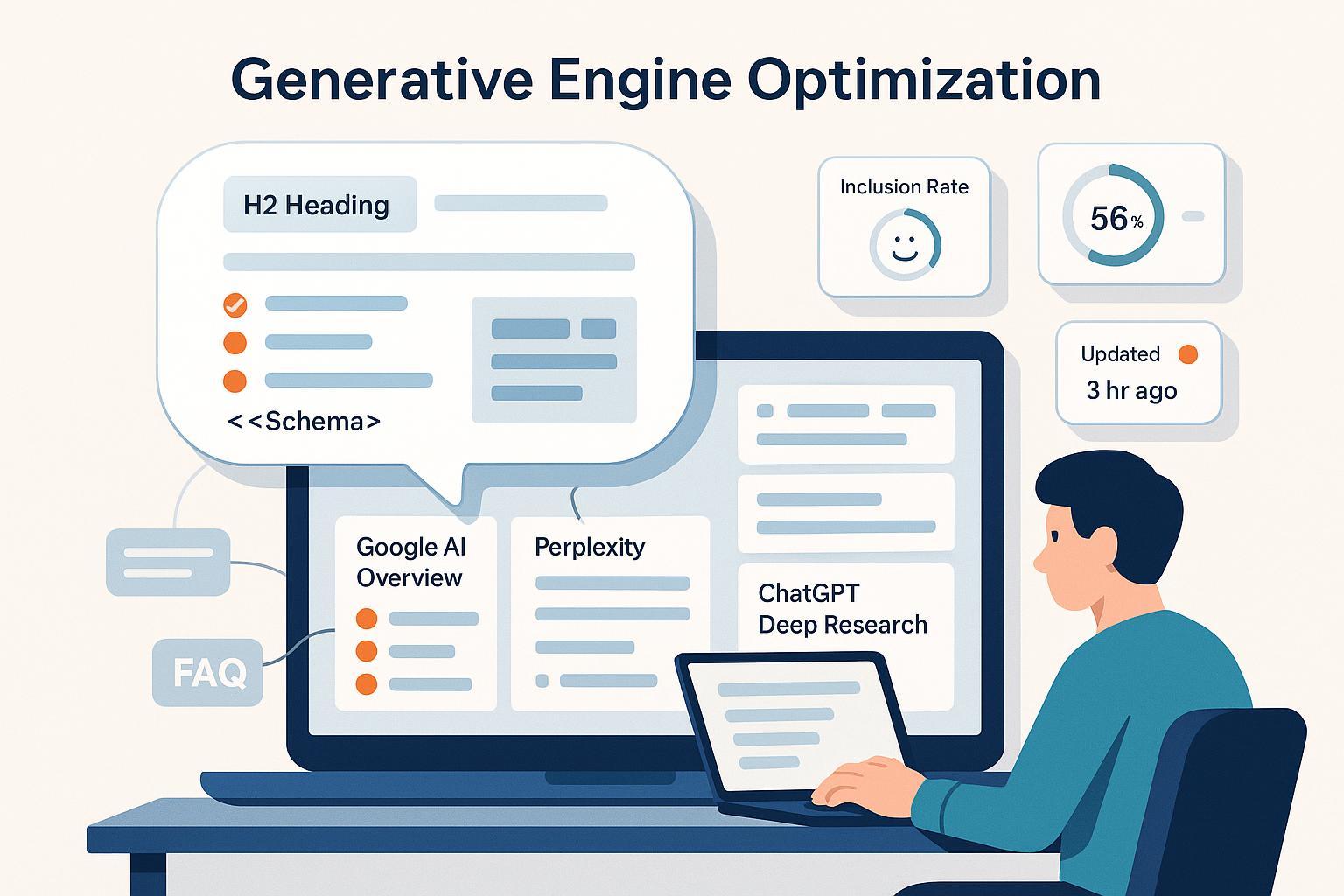GEO Best Practices for Content Creators in 2025: Expert Guide
Discover actionable GEO best practices for 2025. Help your content earn citations from AI engines with advanced, real-world strategies tailored to creators.

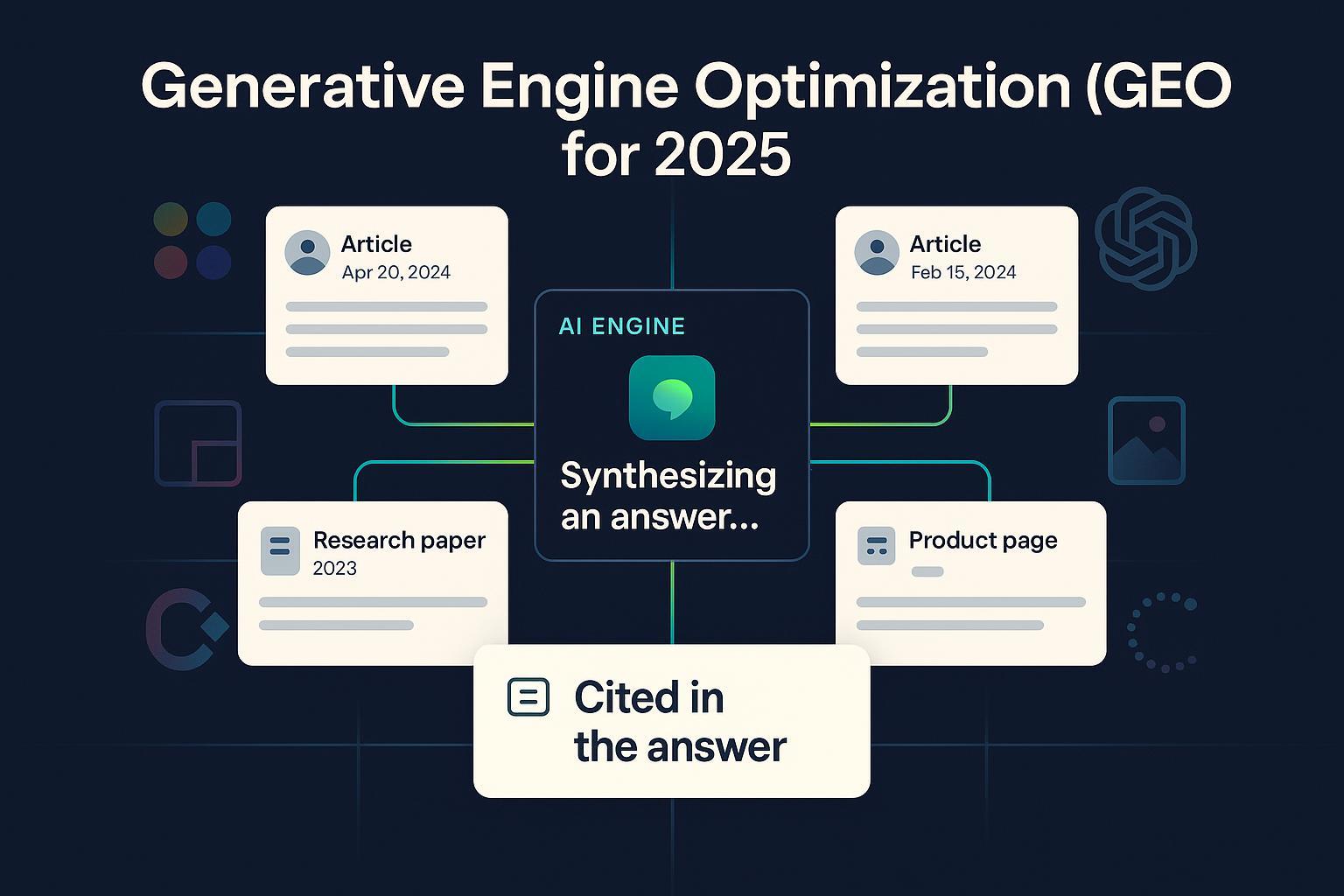
If you’re already solid at SEO but finding your content missing inside AI answers, this guide is your 2025 playbook for Generative Engine Optimization (GEO). The goal is simple: make your pages the sources AI engines cite and synthesize into their answers—across Google AI Overviews/AI Mode, ChatGPT (with browsing), Perplexity, and Claude.
What GEO is (and isn’t)
GEO is the practice of structuring your content and site signals so AI-driven engines can confidently quote, cite, and incorporate your work inside generated answers. That’s different from traditional SEO’s “10 blue links” model. GEO emphasizes entity clarity, verifiable facts, and citation-worthiness.
- According to the 2024 overview of the discipline in Search Engine Land, GEO focuses on being cited as an authoritative source inside AI answers, not just ranking as a blue link—shifting KPIs to citation frequency and answer presence (Search Engine Land: What is generative engine optimization (2024)).
- Google’s 2025 documentation clarifies that AI features link back to original sources and that standard “helpful content” principles plus structured data still apply (Google Search Central: AI features and your website (2025)).
Why GEO matters more in 2025
- Multiple independent studies in 2025 show AI Overviews (AIO) appear on a meaningful share of queries, with ranges from about 11% to over 30% depending on dataset and query type. For example, Semrush reports 13.14% in a broad sample (2025) while Advanced Web Ranking saw information-intent prevalence ranging higher in late 2024–early 2025 (Semrush Google Search statistics 2025; Advanced Web Ranking CTR Q4 2024).
- Studies also find CTR drops on classic organic listings when AIO appears; independent analyses report declines from roughly −15% to −67% depending on position and layout (2025). See syntheses from Search Engine Journal (Amsive/Ahrefs) and RankFuse’s 12‑month analysis (SEJ: AIO hurts CTRs (2025); RankFuse: Paid and organic CTR trends 2024–2025).
Translation for creators: If you’re not inside the AI answer, you may lose discovery even with strong organic rankings. GEO closes that gap.
The KPIs that actually matter for GEO
- In‑answer presence: Is your brand/page cited or quoted inside AI outputs for priority queries?
- Citation frequency: How often are you referenced across platforms (Google AIO/AI Mode, Perplexity, ChatGPT browse)?
- Sentiment and positioning: When cited, is the context affirmative, neutral, or negative?
- Traditional KPIs remain, but as supporting signals: impressions, clicks, time on page, and links.
Foundational best practices (do these on every page)
These are non-negotiables drawn from 2025 practitioner guidance and platform docs.
- Lead with an answer-first block
- Put a direct, quotable answer in the first 1–2 sentences. Then expand with evidence and context. This “front-loads” the facts for LLMs and scanners, aligning with widely recommended GEO patterns in 2025 guides (Backlinko’s GEO playbook 2025; ToTheWeb GEO checklist 2025).
- Write with entities and facts
- Name people, places, products, and organizations precisely; add dates, quantities, versions, and model names that reduce ambiguity. This helps disambiguation in knowledge graphs and LLM parsing.
- Show your receipts (transparent sourcing)
- Cite primary sources and use stable canonical URLs. Include “last updated” dates near the top. AI systems and users weigh provenance cues.
- Make the author an entity
- Display real author bio(s) with credentials and cross‑profile links (LinkedIn, Google Scholar, ORCID). Reinforce this in JSON‑LD (see Technical section) and keep it consistent across the site.
- Structure for scanning
- Short paragraphs, descriptive H2/H3s, bullets, tables, and definition callouts. LLMs and humans both extract better from clean structure.
Technical implementation that moves the needle
Technical hygiene makes your content easier to find, parse, and trust.
- JSON‑LD structured data (priority types): Article, Person, Organization, Product, WebSite, FAQPage/HowTo (when applicable). Validate with Google’s Rich Results Test. Google reiterates JSON‑LD as the preferred format in 2025 (Google: Intro to structured data (2025)).
- Disambiguate entities with @id and sameAs
- Keep sitemaps fresh with
; consider an RSS/Atom or JSON changefeed for freshness cues. - Keep pages indexable, fast, and mobile friendly; fix crawl errors promptly.
- Manage AI crawler access in robots.txt thoughtfully (e.g., GPTBot) balancing reach vs. protection.
- Remember: Google limits visual rich results for FAQ/HowTo since 2023; still useful for AI parsing, but don’t rely on them for SERP visuals (Google: FAQ structured data guidelines, updated 2025).
Example: Article + Author JSON‑LD (simplified)
<script type="application/ld+json">
{
"@context": "https://schema.org",
"@type": "Article",
"headline": "GEO Best Practices in 2025",
"datePublished": "2025-10-10",
"dateModified": "2025-10-10",
"author": {
"@type": "Person",
"@id": "https://yourdomain.com/#author-jane",
"name": "Jane Doe",
"sameAs": [
"https://www.linkedin.com/in/janedoe/",
"https://scholar.google.com/citations?user=janedoe"
]
},
"publisher": {
"@type": "Organization",
"@id": "https://yourdomain.com/#org",
"name": "Your Brand",
"logo": {
"@type": "ImageObject",
"url": "https://yourdomain.com/logo.png"
}
}
}
</script>
Platform behaviors that affect your tactics
- Google AI features link to sources and lean on site quality + structured data. Ensure your content is helpful, updated, and well-marked up (Google Search Central: AI features and your website, 2025).
- Perplexity’s product ethos is to include citations in answers and it introduced a publishers’ program in 2024; publishers should ensure canonical, well‑structured pages with clear provenance (Perplexity: Publishers’ Program (2024)).
- Academic style bodies emphasize citing the original sources behind AI summaries; this indirectly rewards content that’s authoritative and well-documented, not generic (MLA Style Center guidance on AI Overviews citations, 2024).
Practical implication: If your key facts are buried, un-cited, or ambiguous, AI engines will prefer clearer sources.
Your GEO operating cadence (weekly → quarterly)
A sustainable cadence beats sporadic heroics. Here’s a battle‑tested rhythm:
Weekly (lightweight)
- Spot‑test 5–10 priority queries in Google AI Mode/AIO, Perplexity, and ChatGPT browse. Log whether you’re cited and the sentiment.
- Update at least one “money” page with fresher stats, clearer answer‑first paragraphs, and any missing citations.
Monthly (tactical)
- Validate schema across top pages; fix any errors. Confirm author entities and sameAs links are consistent.
- Expand or prune internal links to keep priority content within 2–3 clicks of your home or pillar page.
- Add 1–2 Q&A blocks that restate key definitions or stats concisely (visible to users, not hidden).
Quarterly (strategic)
- Refresh your top content clusters: update data, examples, screenshots, tables, and bylines; revalidate structured data.
- Reassess your entity focus: do your product/people/organization entities resolve cleanly across the web? Are there external corroborating profiles you can strengthen?
A neutral, practical workflow example (monitoring cross‑AI visibility)
- Use a dedicated tool to track whether your brand and pages are cited across AI engines and to spot opportunities for content updates and new clusters. For instance, Geneo provides multi‑platform AI visibility tracking, sentiment analysis of AI answers, historical query logging, and content suggestions that help you decide what to refresh or create next.
Disclosure: Geneo is our product; the example is provided for illustration, not a guarantee of results.
If you’re exploring community‑driven visibility tactics, study how credible participation on forums is cited in AI outputs; this guide on Reddit‑centric practices outlines actionable approaches: Reddit community AI search citations best practices.
Advanced GEO: multilingual and vertical playbooks
Not all audiences—or engines—consume the same way. Calibrate by market and model.
- Implement hreflang for each locale; localize entities (currencies, addresses, standards) and media alt text.
- Ensure each locale has locally authoritative citations; don’t just translate—contextualize.
- Use a consistent content skeleton so LLMs can map equivalents across languages. Practical checklists from international SEO bodies remain relevant in 2025 (see Lokalise’s updated checklist for structure and QA workflows) (Lokalise international SEO checklist, 2025).
Ecommerce nuances
- Product schema with offers, specs, ratings, and availability; surface unique copy beyond manufacturer text.
- Keep feeds and inventory fresh; stale availability confuses models.
- See 2025 retail guidance emphasizing quarterly updates to key specs and FAQs for LLM extraction (Syndigo retail GEO cadence, 2025).
SaaS nuances
- Feature matrices, integration docs, changelogs, and transparent pricing; clarify entities for your product and integrations.
- Publish security and compliance pages (SOC 2, ISO 27001) and link them consistently from docs.
- Maintain Google Business Profile, reviews, and NAP consistency; publish localized guides that AIs can cite.
If you’re comparing AI visibility tools or approaches, an objective look at market options can help set expectations and choose a stack; here’s a balanced walkthrough to calibrate your evaluation criteria: Profound review 2025 with alternative recommendation.
Hallucinations, attribution, and brand safety (what to do in 2025)
Hallucinations remain material in 2025 and vary by domain; rigorous studies show notable error rates especially in legal and high-stakes contexts. The Stanford HAI 2025 Index summarizes persistent reliability concerns and domain variability (2025) (Stanford HAI: 2025 AI Index). UX researchers also stress that users trust AI answers more when citations are transparent and verifiable (Nielsen Norman Group: AI is changing search behaviors, 2025).
Mitigations you control
- Strengthen provenance cues: visible author, updated date, primary sources, and machine‑readable metadata.
- Human‑in‑the‑loop editorial: set a review gate for claims, stats, and medical/legal/financial mentions.
- Provide “definitive” canonical pages for your most cited facts (terminology, pricing, specs) and keep them freshly updated.
- For your own AI endpoints or chat experiences, use RAG with explicit citations and “I don’t know” handling.
Troubleshooting: common GEO pitfalls (and quick fixes)
- Over‑optimizing for AI and losing your voice
- Fix: Keep answer‑first clarity, but write for humans first; add examples, tone, and opinionated guidance.
- Schema without on‑page corroboration
- Fix: Ensure every claim in structured data is visible and verifiable within the page.
- Thin or circular citations
- Fix: Link to primary data and standards bodies; avoid relying solely on vendor blogs.
- Stale stats and changelogs
- Fix: Add a quarterly update task; use a content calendar to refresh numbers and screenshots.
- Orphaned pages and deep content
- Fix: Re‑cluster with internal linking; keep priority content within 2–3 clicks of a pillar.
If you want to see how AI engines are currently citing sources in your niche, scan a real‑world AI visibility report to reverse‑engineer the formats that get cited most often: Query report example: GDPR fines 2025—largest cases.
A realistic quarterly GEO playbook (copy/paste into your roadmap)
- Audit 15–30 URLs with revenue or lead impact.
- Confirm answer‑first blocks are present and quotable.
- Update stats, dates, and screenshots; add 3–5 authoritative citations.
- Validate Article/Person/Organization JSON‑LD with @id and sameAs.
- Rebuild topic clusters
- Create/refresh 1 pillar and 3–5 supporting articles; map internal links both ways.
- Add Q&A blocks that restate definitions and stats succinctly (visible to users).
- Platform spot‑checks (before/after)
- Run priority queries in Google AI Mode/AIO, Perplexity, and ChatGPT browse.
- Capture and log citation presence/sentiment.
- Entity & E‑E‑A‑T upgrades
- Expand author bios; add external corroboration (podcasts, talks, profiles) linked via sameAs.
- Performance & safety
- Speed and Core Web Vitals check; fix crawl/index errors.
- Review high‑stakes content with SME sign‑off; add clear provenance and citations.
- Tooling & process
- Establish a weekly 30‑minute GEO stand‑up; assign owners to updates and schema.
- Consider changefeeds (RSS/Atom) for freshness and ensure sitemaps use
.
Quick reference: when to use advanced tactics
- Programmatic FAQs/Q&A: When concepts are frequently asked and benefit from concise restatements.
- Model Context Protocol (MCP): When building agentic integrations or developer‑facing endpoints; it’s not a Google ranking factor but helps LLMs interact with your data reliably (Model Context Protocol specification, 2025).
- Multilingual hreflang + localized entities: When 15%+ of your audience is international or you plan regional launches within 6 months.
Summary
GEO in 2025 is about making your content unmistakably citable: answer‑first structure, precise entities, transparent sources, clean schema, and a steady operating cadence. Treat AI engines as discriminating summarizers: if your facts are clear, current, and corroborated—and your site signals are machine‑readable—you earn presence in the answer instead of just another blue link.


